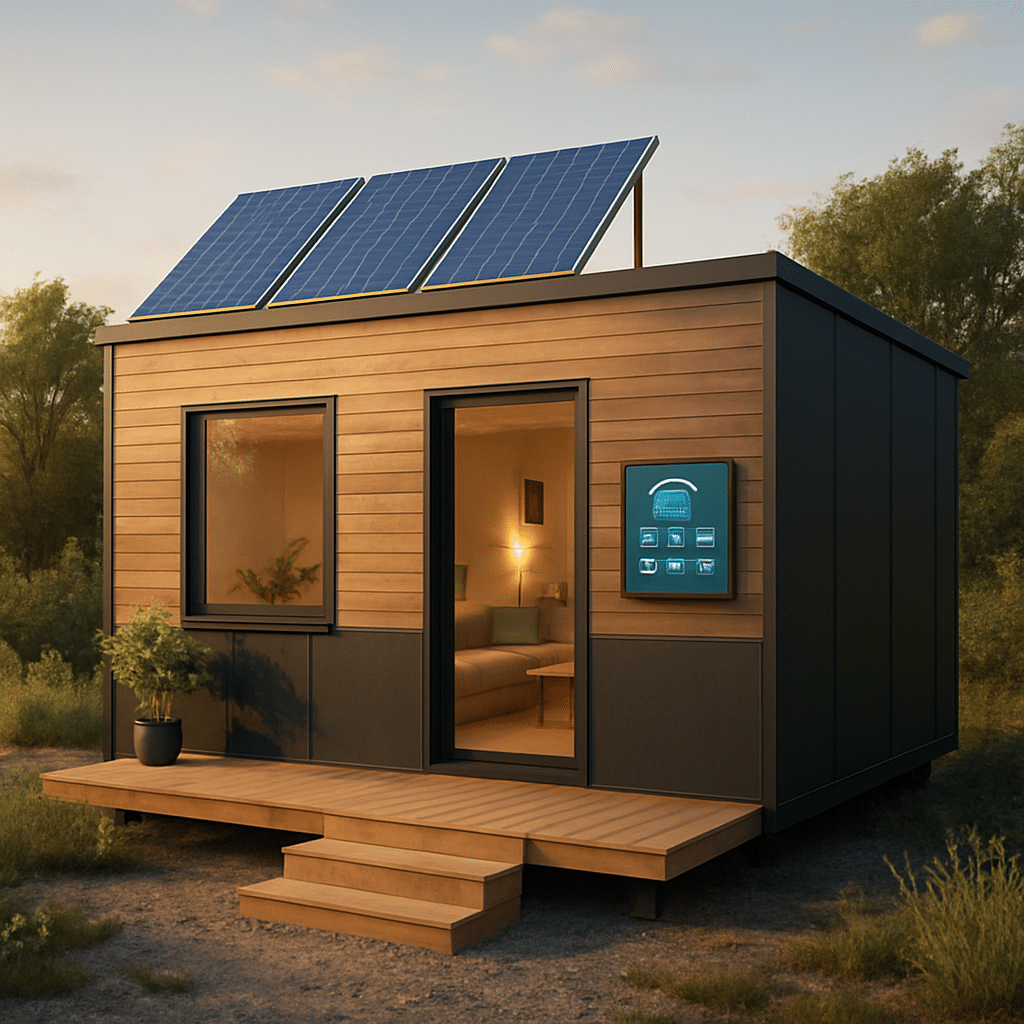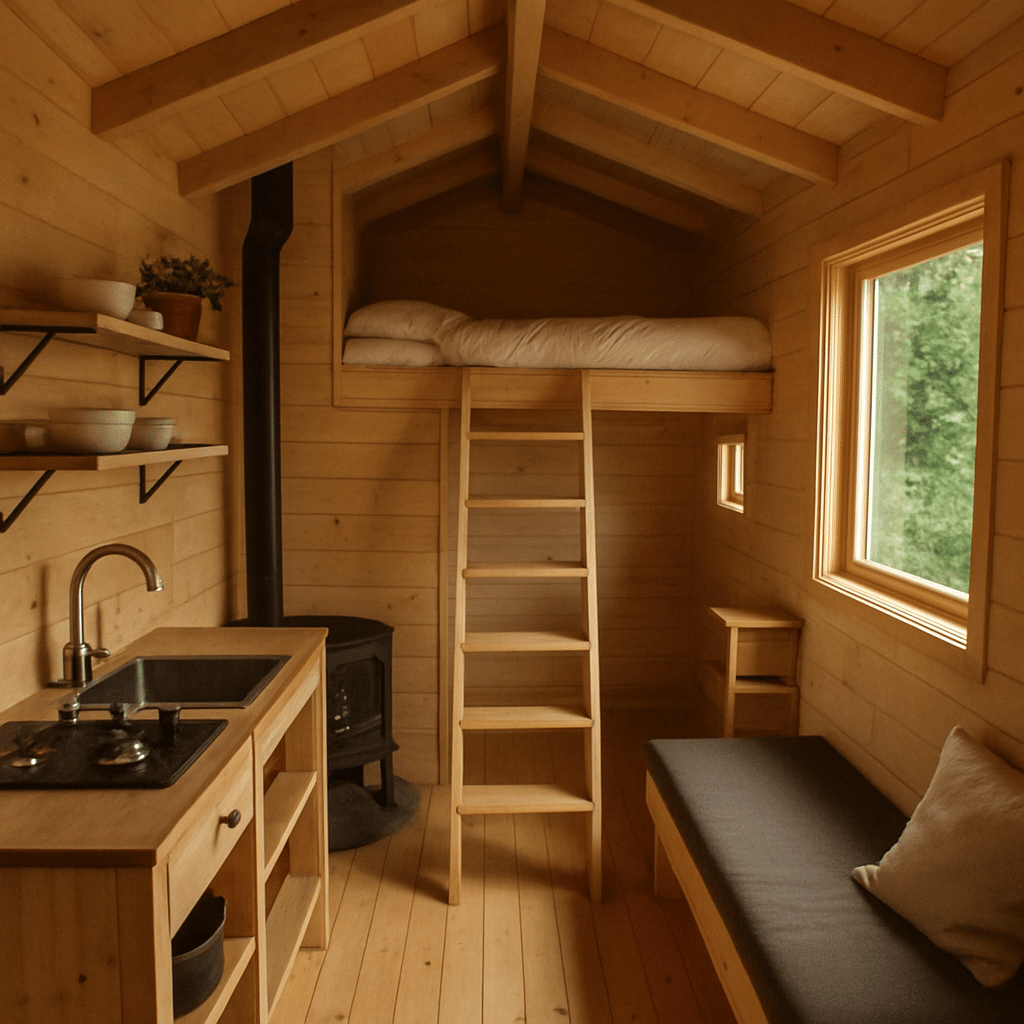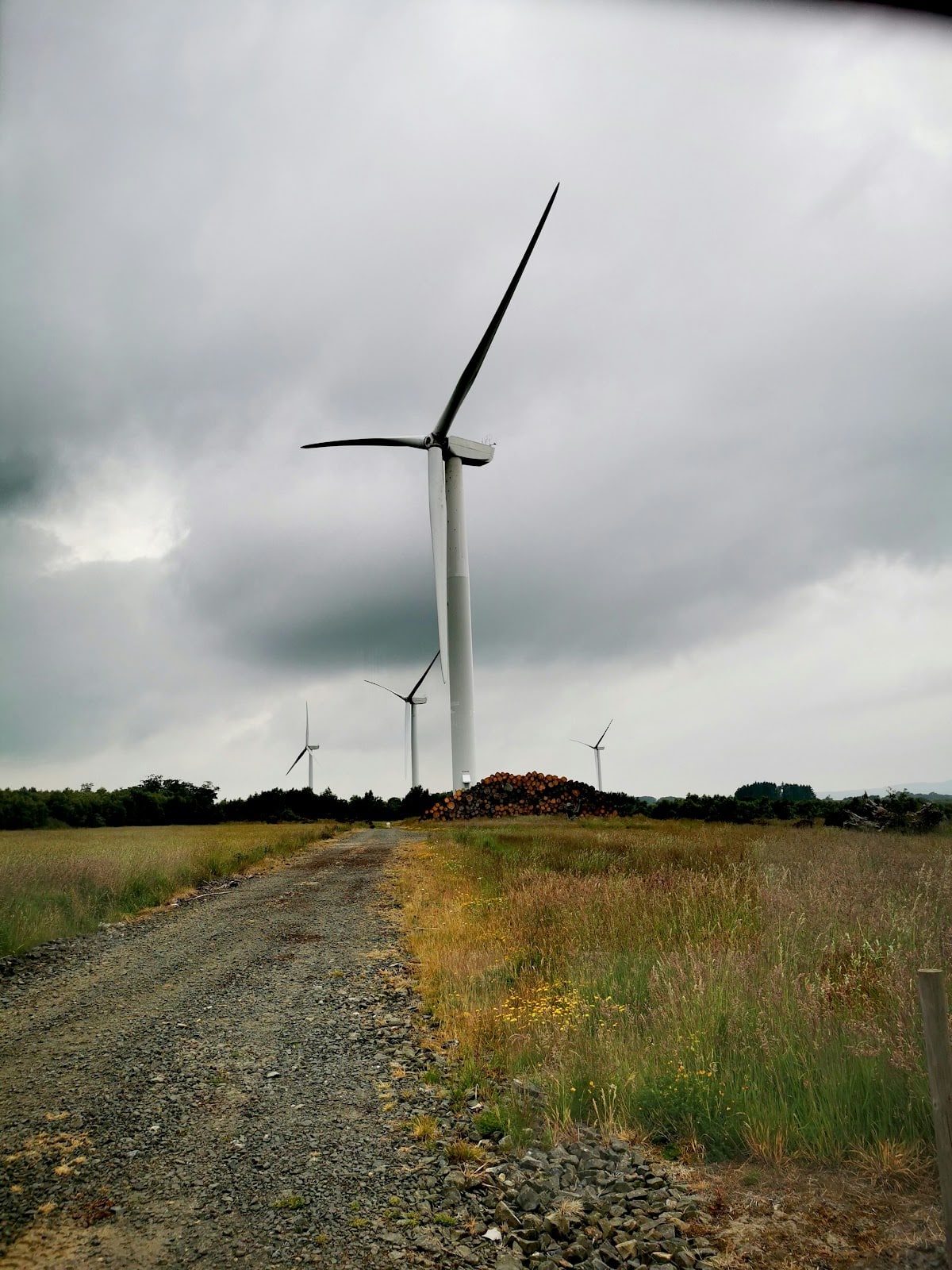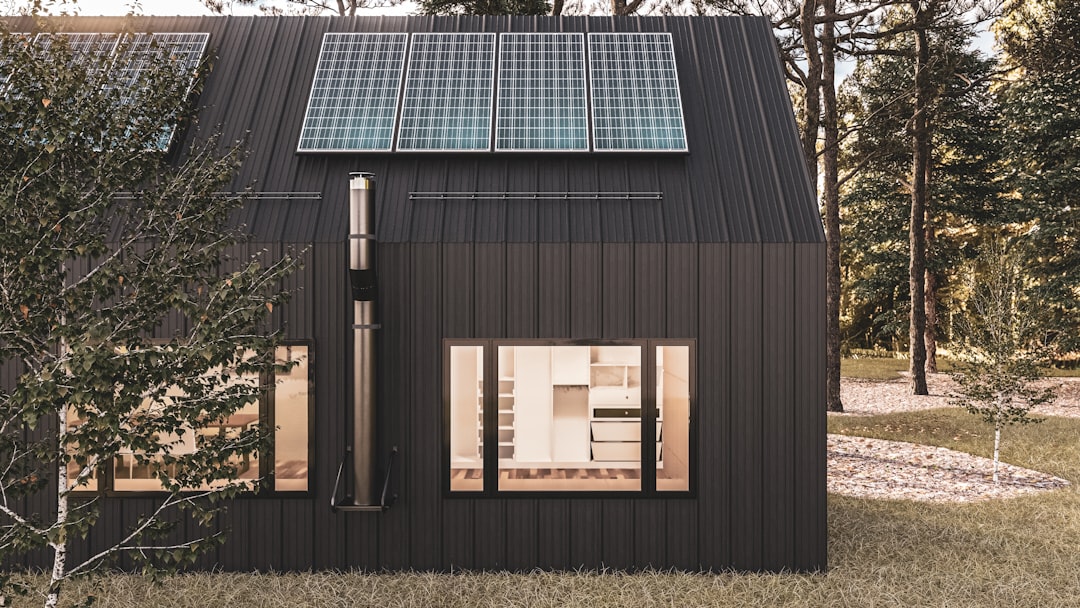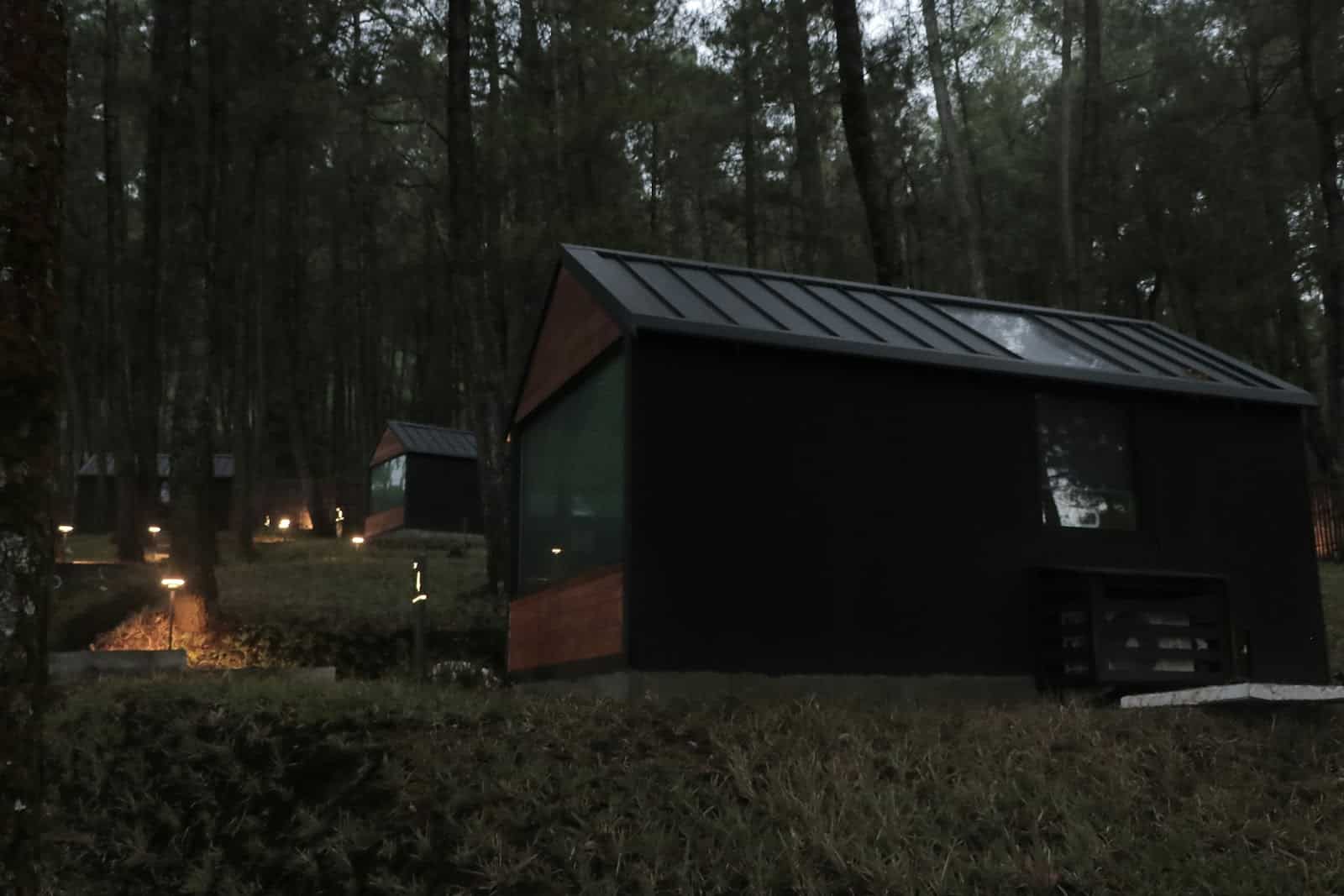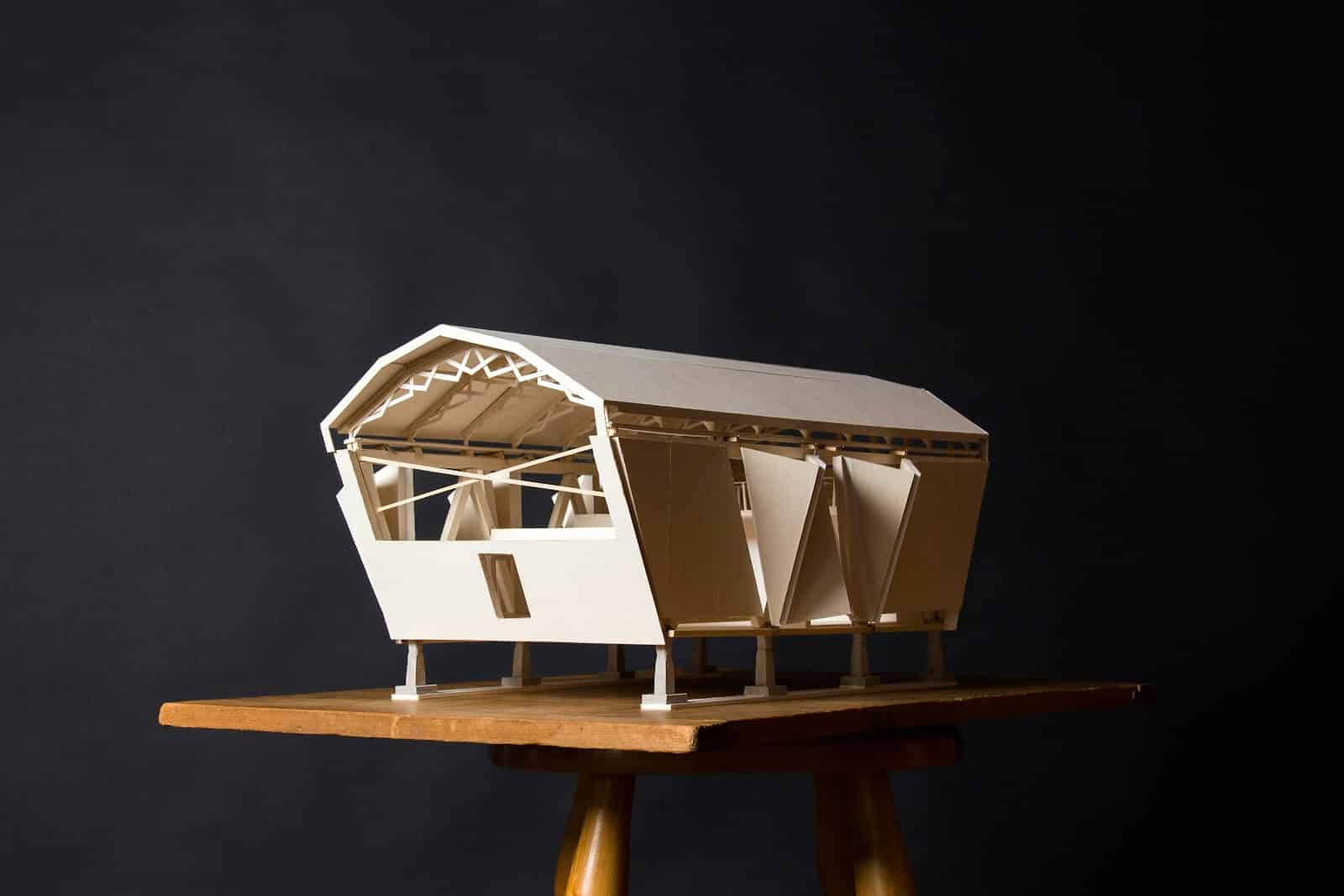The Rise of Off-Grid Tiny Homes: Combining Solar Panels, Smart Tech, and Sustainability
Off-grid tiny homes are transforming the way we think about living spaces. These compact dwellings offer a sustainable and eco-friendly lifestyle.
With the integration of solar panels, they harness renewable energy. This reduces reliance on traditional power grids.
Smart technology further enhances their efficiency. It allows for better resource management and convenience.
Sustainable housing practices are at the core of their design. They focus on minimizing environmental impact.
Tiny house design maximizes space and functionality. It encourages a minimalist lifestyle, reducing clutter and consumption.
Green building materials are often used in construction. This ensures that the homes are both durable and eco-friendly.
Off-grid house plans include innovative solutions. These often feature rainwater collection and composting toilets.
The rise of off-grid tiny homes reflects a shift towards sustainable living. They offer a unique blend of modern technology and environmental consciousness.
What Are Off-Grid Tiny Homes?
Off-grid tiny homes are small, self-sufficient dwellings designed to operate independently from traditional utilities. They provide a compact and sustainable living space, often in harmony with nature.
These homes are equipped with systems that generate their own power, collect water, and manage waste efficiently. This self-reliance marks a significant departure from conventional homes connected to public utilities.
Off-grid tiny homes incorporate several key features:
- Solar panels for renewable energy generation
- Rainwater collection and filtration systems
- Composting or incinerating toilets for waste management
- High-efficiency appliances and LED lighting
Their design emphasizes small-scale living without sacrificing comfort. Each element of the design serves a purpose in creating a functional and efficient space.
Living in these homes often promotes a minimalist lifestyle. The limited space encourages residents to prioritize what truly matters. Consequently, off-grid tiny homes inspire a simpler life, focused more on experiences and less on possessions.
The Growing Appeal: Why Choose Off-Grid Tiny Homes?
Off-grid tiny homes are gaining traction as a popular housing solution. This trend reflects a desire for sustainable and alternative living options. More people are drawn to the independence they offer from traditional utilities.
These homes provide significant cost savings over time. Without monthly utility bills, residents can allocate resources elsewhere. The initial investment in technology, like solar panels, often pays for itself.
Additionally, off-grid homes allow for personalization and flexibility. Residents can customize their designs to match unique needs and preferences. Many find joy in creating a space that truly reflects their lifestyle.
Living off the grid also supports an eco-conscious mindset. By using less energy and relying on renewable sources, individuals reduce their carbon footprint. Embracing such practices nurtures a symbiotic relationship with the environment.
Key reasons for choosing off-grid tiny homes include:
- Lower long-term living costs
- Independence from utility companies
- Opportunities for customization and flexibility
- Reduced environmental impact
- Closer connection to natural surroundings
The rise of off-grid tiny homes signifies a move towards more meaningful, intentional living. The compact nature of these homes fosters simplicity and aligns with minimalist living ideals.
Core Elements of Off-Grid Living: Energy, Water, and Waste
Living off the grid requires innovative energy solutions. Residents rely on sustainable alternatives to power their tiny homes. Solar panels are the most common choice due to their efficiency.
Water management is another critical aspect. Off-grid tiny homes often use rainwater harvesting systems. This reduces reliance on municipal water sources.
Waste management in these homes is vital for self-sufficiency. Composting toilets are a popular option, minimizing water use. They also transform waste into fertilizer, closing the resource loop.
Effective off-grid living hinges on several essential components:
- Energy generation using solar and wind power
- Efficient water capture and filtration systems
- Sustainable waste management practices
These core elements help maintain a harmonious relationship with nature. Off-grid solutions promote resource conservation and environmental awareness.
By embracing these systems, homeowners achieve greater independence. They also contribute to a healthier planet by reducing pollution and resource consumption.
by Nathana Rebouças (https://unsplash.com/@nathanareboucas)
Solar Panels and Renewable Energy Solutions
Solar technology plays a pivotal role in off-grid tiny homes. Photovoltaic panels convert sunlight into electricity efficiently. They provide a reliable energy source, cutting ties with conventional grids.
Installation of solar systems requires initial investment, but long-term benefits are substantial. Once set up, solar panels drastically reduce electricity costs. This makes them an attractive option for frugal and eco-conscious living.
Some off-grid homes also incorporate wind turbines or hydro systems. These options enhance energy production, especially in areas with specific climate conditions.
Renewable energy solutions often include:
- Photovoltaic solar panels
- Small-scale wind turbines
- Micro-hydro systems for water-rich areas
The integration of multiple energy sources can maximize efficiency. This hybrid approach offers energy resilience for tiny home dwellers.
Exploring various renewable options allows homeowners flexibility in meeting energy needs. It also contributes to a sustainable lifestyle choice that minimizes ecological impact.
by Dan Loftus (https://unsplash.com/@dloftusphoto)
Water Collection, Filtration, and Waste Management
Water is a precious resource for off-grid homes. Many use rainwater collection systems to capture it. This process involves gathering rain from roofs into storage tanks.
Once collected, water must be filtered. Filtration systems ensure safety and cleanliness for household use. This setup is crucial for health and environmental sustainability.
Waste management presents another challenge. Off-grid homes often use advanced composting systems for organic waste. These turn waste into usable compost, promoting eco-friendly living.
Typical water and waste systems include:
- Rainwater harvesting and storage tanks
- Multi-stage water filtration systems
- Composting toilets and waste recyclers
Selecting the right systems is crucial for efficient water and waste management. These solutions are both practical and beneficial for the environment.
Effective water and waste systems help preserve natural resources. Off-grid tiny homes encourage mindful consumption and reduce environmental impact.
Smart Home Automation in Tiny Homes
Incorporating smart home technology in off-grid tiny homes enhances their efficiency. These systems automate various functions, saving time and energy. They help create a more comfortable and intuitive living environment.
Smart devices can manage energy usage effectively. They can adjust lighting, heating, and cooling systems based on occupancy and usage patterns. This automation reduces wastage and maximizes resource utilization.
Security systems also benefit from smart technology. With features like remote surveillance and smart locks, residents enjoy greater peace of mind. Homeowners can monitor their property from anywhere in the world.
Common smart home features in off-grid tiny homes include:
- Automated lighting and climate control
- Smart security systems with remote access
- Energy management systems to monitor consumption
Technology integration is particularly beneficial for tiny homes. It allows owners to live more sustainably and efficiently.
Ultimately, smart home automation aligns with the minimalist and eco-friendly goals of off-grid living. It provides a modern touch while keeping resource conservation at its core.
Sustainable Tiny House Design: Materials and Space Optimization
Designing a sustainable tiny home requires thoughtful planning. Materials chosen must be eco-friendly and durable. This reduces the home’s environmental impact over time.
Bamboo, recycled steel, and reclaimed wood are popular options. These materials have low carbon footprints and are often locally sourced. Using green building materials is key to sustainable housing.
Space optimization is critical in a tiny home. Clever design solutions maximize functionality and comfort. Innovative storage solutions ensure every inch of space is utilized.
Key strategies for space optimization include:
- Multipurpose furniture to save space
- Built-in storage under stairs or benches
- Vertical shelving to utilize height
The tiny house design promotes minimalist living. It emphasizes simplicity and reduces clutter. This leads to a more intentional lifestyle.
Balancing aesthetics with practicality is crucial. The design should reflect personal style while remaining functional. Sustainable living does not mean compromising on comfort or beauty.
Ultimately, sustainable tiny homes represent a shift towards more mindful living. They embrace principles of minimalism and environmental stewardship. This harmony with nature enriches the tiny home living experience.
by (https://unsplash.com/@thomaswerneken)
Off-Grid House Plans: Customization and Flexibility
Off-grid house plans offer a unique level of customization. Every home can be tailored to fit individual preferences. This makes each tiny home as unique as its owner.
Flexibility is a key advantage of off-grid living. Home designs can adapt to different environments. This allows for placement in diverse locations, from urban to rural settings.
Plans often integrate essential sustainable features. These might include solar panel setups or rainwater collection systems. Such elements ensure functionality while maintaining eco-friendly standards.
Key aspects often considered in off-grid house plans include:
- Customizable floor plans for different needs
- Integration of sustainable systems for self-sufficiency
- Adaptability to various climates and landscapes
The potential for personalization is extensive. Many choose layouts based on lifestyle and environmental considerations. This enhances the overall living experience.
The beauty of these homes lies in their versatility. They empower owners to live in harmony with nature. This contributes to the growing popularity of off-grid lifestyles.
Overcoming Challenges: Climate, Location, and Legalities
Navigating climate challenges is crucial for off-grid tiny homes. Different regions present unique weather conditions. Proper insulation and materials can protect homes in varied climates.
Location selection requires careful consideration. It’s important to ensure access to essential resources. Remote areas might offer privacy but lack certain conveniences.
Legalities can be a hurdle in building off-grid homes. Zoning laws and building codes differ by area. It’s vital to research regulations before settling on a site.
Considerations when addressing these challenges include:
- Insulating for temperature extremes
- Researching site-specific legal requirements
- Ensuring resource availability in chosen locations
Developing a thorough understanding of these aspects is essential. It makes the transition to off-grid living smoother. This preparation ensures a sustainable and lawful housing experience.
Adapting to these challenges can lead to a rewarding lifestyle. Off-grid tiny homes offer freedom and self-sufficiency for those willing to navigate these obstacles.
Real-Life Examples: Inspiring Off-Grid Tiny Homes
Real-life examples of off-grid tiny homes demonstrate innovation and sustainability. Each home reflects unique solutions for eco-friendly living.
One stunning example is nestled in the Pacific Northwest. This home features expansive solar panels and rainwater collection. Its compact design maximizes efficiency without compromising comfort.
In the deserts of Arizona, another tiny home thrives off the grid. It utilizes renewable energy and a composting toilet. Clever space-saving solutions cater to a minimalist lifestyle.
Remarkable features from these homes include:
- Solar panels for clean energy
- Innovative water management systems
- Efficient use of space to enhance comfort
These homes illustrate the potential of off-grid living. They offer inspiration for sustainable housing enthusiasts. By embracing renewable resources and smart designs, they redefine modern living.
by flick Flank (https://unsplash.com/@flickflank)
The Future of Sustainable and Alternative Housing
The future of housing is shifting towards sustainability. Off-grid tiny homes play a crucial role in this shift. They offer a path to a more eco-conscious lifestyle.
As urban areas grow denser, alternative housing gains importance. Off-grid tiny homes present practical solutions for space and resource limitations. They foster community resilience and environmental responsibility.
Technology will further enhance sustainable housing. Innovations in energy systems and smart home solutions continue to evolve. Off-grid tiny homes are a forward-thinking response to housing challenges.
by Marsumilae (https://unsplash.com/@marsumilae)
Conclusion: Embracing Minimalist and Eco-Friendly Living
Embracing off-grid tiny homes means committing to a minimalist lifestyle. This shift encourages reducing consumption and maximizing sustainability. It’s about living intentionally and harmoniously with nature.
Eco-friendly homes provide an opportunity for personal and environmental transformation. They challenge traditional housing norms and offer newfound freedom. The future of housing lies in simplicity and thoughtful living, embodied by off-grid tiny homes.

